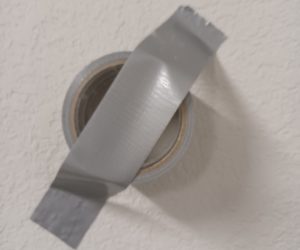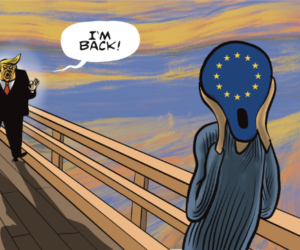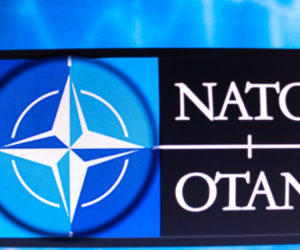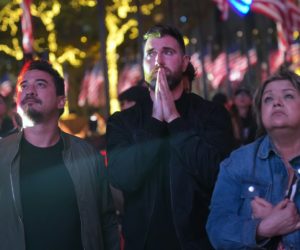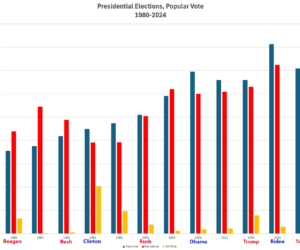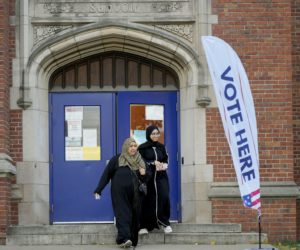Photo Update:
Navy veteran Nelson Mitchell, believed to be the oldest living African-American survivor of the attack on Pearl Harbor, reflects in the shrine room of the USS Arizona Memorial on Joint Base Pearl Harbor-Hickam, Hawaii, Dec. 5, 2015. Mitchell was attending a harbor tour in observance of the 74th anniversary of the Dec. 7, 1941, attack. U.S. Navy photo by Petty Officer 2nd Class Tamara Vaughn
Daniel Martinez, USS Arizona Memorial chief historian, speaks at a Blackened Canteen ceremony as part of the Pearl Harbor Day ” 74th Commemoration Anniversary Dec. 6, 2015, at the USS Arizona Memorial, Hawaii. The Blackened Canteen ceremony is a way for Americans and Japanese veterans and observers to extend a hand of continued friendship, peace and reconciliation by pouring bourbon whiskey as an offering to the fallen in the hallowed waters of Pearl Harbor. The ceremony is co-hosted by the National Park Service and Pacific Aviation Museum Pearl Harbor and is one event taking place leading up to the 74th anniversary of Pearl Harbor Day to pay tribute to the nation™s military while enlightening Americans about veterans and service. (U.S. Air Force photo by Staff Sgt. Christopher Hubenthal)
American and Japanese veterans pour bourbon whiskey into the hallowed waters of Pearl Harbor as a way to observe and celebrate the continued peace and reconciliation between the two nations during a Blackened Canteen ceremony as part of the Pearl Harbor Day 74th Commemoration Anniversary Dec. 6, 2015, at the USS Arizona Memorial, Hawaii. (U.S. Air Force photo by Staff Sgt. Christopher Hubenthal)
Original Post:
Monday, December 7, is the 74th anniversary of that “date that will live in infamy.”
A brief historical reminder by the Naval History and Heritage Command:
It was 6 a.m. on Dec. 7, 1941, when six Japanese carriers launched a first wave of 181 planes composed of torpedo bombers, dive bombers, horizontal bombers and fighters toward Hawaii. The Japanese aircrews achieved complete surprise when they hit American ships and military installations on Oahu shortly before 8 a.m. More than 90 ships were anchored in Pearl Harbor, but the Japanese’s primary targets were the eight battleships anchored there. Seven were moored on Battleship Row along the southeast shore of Ford Island while the USS Pennsylvania (BB 38) lay in dry dock across the channel.
The attack ended shortly before 10 a.m., less than two hours after it began, and the American forces paid a heavy price. Twenty-one ships of the U.S. Pacific Fleet were sunk or damaged, 188 aircraft destroyed and 159 damaged, the majority hit before they had a chance to take off. American dead numbered more than 2,000 with more than 1,000 military and civilian wounded. The attack which horrified a nation was the catalyst that brought America into World War II.
The Department of Defense provides the following statistics in graphic form:
U.S. Personnel Casualties:
U.S. Ship Damage:
While we remember the brave who died on that fateful day 74 years ago, we must not forget the survivors of the tragedy, a group of men and women that shrinks in numbers every year, but not in the legacy they represent.
While initially numbering in the tens of thousands, a December 2012 Associated Press report said that only about 2,000 to 3,000 Pearl Harbor survivors were still living then.
Many of the survivors belonged to the National Pearl Harbor Survivors Association, an organization whose members were at or in the vicinity of Pearl Harbor, Hawaii, during the Japanese attack and whose goal was to “facilitate the remembrance of the attack on Pearl Harbor, and preserve the December 7, 1941, date in People’s memories.”
While at one time the organization had over 70,000 members, the passage of time has taken such a heavy toll on its membership that in December 2011, on the 70th anniversary of Pearl Harbor, the Association was officially disbanded.
Still, many of the survivors — most in their 90s and beyond — travel to Pearl Harbor every anniversary to participate in remembrance ceremonies.
Once again this year, on December 7, the U.S. Navy in Hawaii will conduct a formal remembrance ceremony at Pearl Harbor, with the Pearl Harbor survivors and other World War II veterans as honored guests.
Rear Adm. John Fuller, Commander, Navy Region Hawaii and Naval Surface Group Middle Pacific describes the Pearl Harbor survivors in this way:
They come to show their respect to their shipmates and comrades who never came home. Many of them wear their own special uniform: hat, jacket and Aloha shirt.
.
They come to teach us – and the world – the lessons of their war. When we talk to the veterans of the War in the Pacific they tell us they were just doing their jobs, serving their country, answering the call.
.
Their gentle humility belies the strength of their character.
Below is a photo of some of the survivors attending the 72nd anniversary commemoration of the attack on Pearl Harbor. (U.S. Navy photo by Mass Communication Specialist 2nd Class Nardel Gervacio)
Finally, President’s Obama’s Proclamation and some historical photos and a video of that day 74 years ago.
Proclamation:
On National Pearl Harbor Remembrance Day, we pay tribute to the men, women, and children — military and civilian — who lost their lives on December 7, 1941, honor all who served in the wake of that infamous day, and recognize the sacrifices today’s service members make to carry forward the inextinguishable torch of liberty for generations to come.
The USS Arizona burns after being hit by a Japanese bomb while U.S. sailors aboard the neighboring USS Tennessee spray fire hoses to force burning oil away from their ship during the air attack on Pearl Harbor, Hawaii, Dec. 7, 1941. (U.S. Navy photo, National Archives collection.)
The USS California, center, sits near the southeastern part of Ford Island in the center of Pearl Harbor, Hawaii, Dec. 7, 1941, after Japanese aerial torpedoes and bombs hit it. U.S. Navy photo courtesy of National Archives
The crew abandons the damaged USS California as burning oil drifts down on the ship shortly after the end of the Japanese raid on Pearl Harbor, Hawaii, Dec. 7, 1941. U.S. Navy photo courtesy of National Archives
The USS Arizona burns just after her forward magazines exploded during the Japanese attack on Pearl Harbor, Hawaii, Dec. 7, 1941. U.S. Navy photo courtesy of National Archives
The USS Shaw, left, sits in floating dry dock as the USS Nevada burns after the Japanese attack on Pearl Harbor, Hawaii, Dec. 7, 1941. U.S. Navy photo courtesy of National Archives
Navy Rear Adm. William R. Furlong, right, commandant of the Pearl Harbor Navy Yard, and another officer stand on board the capsized hull of the USS Oklahoma at Pearl Harbor, Hawaii, Sept. 6, 1942. The ship was then in the early stages of salvage. U.S. Navy photo courtesy of National Archives
The film below, details the Japanese attack on Pearl Harbor and is part of the U.S Navy Heritage Mini-Series. The series was produced by Empire Media Group, in conjunction with the Naval History and Heritage Command and the Naval Historical Foundation.
Lead Photo: A floral wreath is placed in the water to memorialize the lives lost during the attacks on Pearl Harbor, Hawaii, during a memorial ceremony held aboard the Coast Guard Cutter Taney in Baltimore, Dec. 7, 2014. U.S. Coast Guard photo by Petty Officer 3rd Class Matthew S. Masaschi

